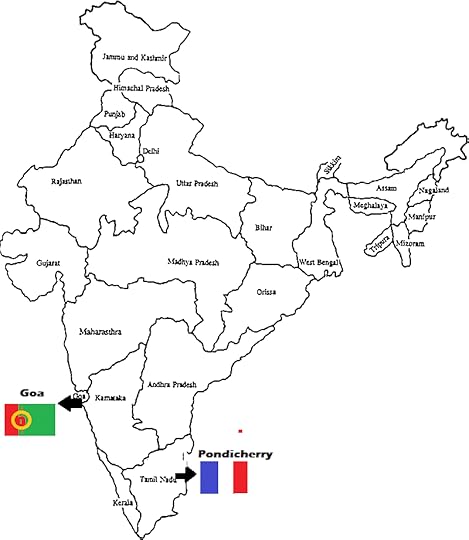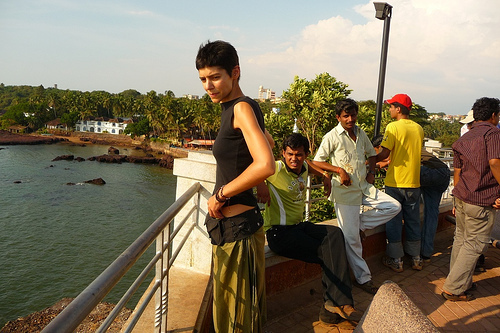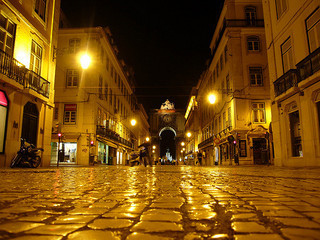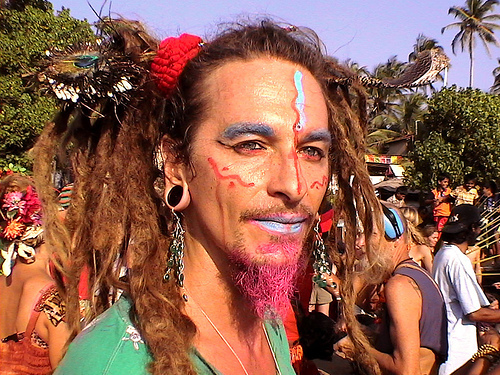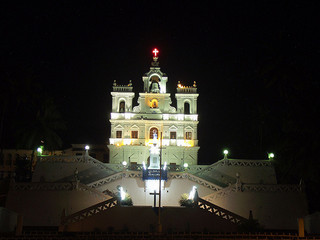Lisa Niver's Blog: We Said Go Travel, page 449
November 26, 2013
Nokia: Sharing Our Lumia 925 Photos
 From Nokia:
From Nokia:Our Trial a Nokia programme has been a source of much experience, comparison, inspiration and FUN for a number of years now. Whether you’re reviewing for a tech blog or it’s your first time using a Nokia phone ever, we love to see and share the stories and experiences that come from it.
In the article ABOUT WE SAID GO TRAVEL:
Spending the time to sit down and capture super high quality images isn’t always an option when you’re generally using your phone. So how does the Lumia 925 handle every day point and shoot?
Well, Lisa from We Said Go Travel has been testing just that. She’s been on a mission around Thailand to Malaysia, Philippines, Palau, Guam, Oahu and then back to Los Angeles. During her trip she has been exclusively using the Lumia 925 to capture her memories.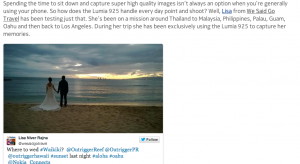
We are very excited to be using the Nokia Lumia 925 for photo and video on our travels. It really is amazing! We will be sharing more video, images and articles soon. Check out this new video from Palau shot on our Nokia Lumia 925!
WATCH: Palau Pacific Resort
The post Nokia: Sharing Our Lumia 925 Photos appeared first on We Said Go Travel.
Arkansas: Courageous Little Rock Nine
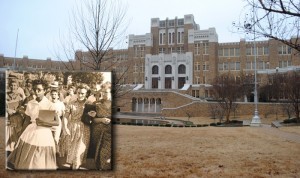 There’s nothing as awesome as courage
There’s nothing as awesome as courage
When we think of an awe-inspiring travel site, the mind immediately begins to visualize images of the Grand Canyon; somewhere lofty from which mere mortals can, for a few moments, look on the vista ahead as if we had just finished creating it.
That’s perfectly legitimate but for me, what triggered a sense of awe, gratitude and pure admiration was an elegant but unspectacular brown brick building, a high school, as a matter of fact.
Little Rock Central High School looks like any ordinary American secondary school today; students of every shape, size and skin color are streaming out the doors, trading friendly jibes, laughing and jostling each other. Just the end of a regular school day.
It was a very different picture on Sept. 4, 1957 when nine black students arrived to register for classes. They met an angry mob of protestors, white segregationists determined to keep Central a white-only school.
The U.S. Supreme Court had declared that segregation of schools by colour was unconstitutional and illegal. Arkansas Governor Orval Faubus opposed the ruling and directed Central High to do so as well.
The governor ordered the Arkansas National Guard to join the hundreds of segregationist citizens in blockading the school.
The action of The Little Rock Nine, as they became known, was arguably the first major event in American history watched on television, heard on radio and trumpeted by nearly every newspaper in the U.S. It was this site in an ordinary neighborhood that defined the battle for freedom and equality that spread like an uncontrolled fire across the US in the 1960s.
Photos of the event are heart-wrenching, especially one depicting a young student with a crowd of white citizens screaming at her. When she spotted what she thought was a friendly face, the woman spat at her. I feel tears forming in my eyes each time I see those photos.
The standoff lasted for three weeks. Finally, by invitation from the mayor, President Dwight Eisenhower on Sept. 24, sent the 101st Airborne Division of the U.S. Army to protect the nine students and enforce integration. He also federalized the Arkansas National Guard, taking the 10,000 members out of the governor’s hands.
The nine students enrolled and attended classes, usually enduring physical and verbal abuse for the remainder of the year. Even a year later, the governor closed four high schools, threatening to create private schools.
Today, the school houses a museum of civil rights. Across the street, the community operates an impressive information centre displaying photos and information. Although neither this centre nor Little Rock are mainstream tourist destinations, visit if you get the chance.
I can safely say my visit was one of the most profound experiences of my travel life. I knew standing there that I, like the rest of humanity, owed those courageous youngsters a gigantic debt of gratitude. It doesn’t matter that I’m not black. It matters that someone seemingly small and powerless, in the face of hatred and danger, stood up for human rights.
About the Author: Regis Yaworski, retired from teaching at a Canadian college, publishes a travel website as The Road Prof. He specializes on road trips but that doesn’t keep him out of airliners or cruise ships.
The post Arkansas: Courageous Little Rock Nine appeared first on We Said Go Travel.
November 25, 2013
Love to Travel By Boat? Sailing Through History
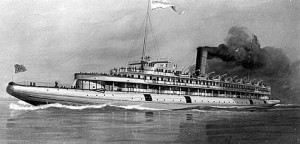 The invention of the boat was a technological breakthrough that brought forward a new way to explore the world. The first boats were made by the Egyptians and were used to transport goods along the Nile River. Over the centuries, boats became more and more sophisticated to the point that they could cross oceans. Great explorers such as Christopher Columbus, Vasco Da Gama and Ferdinand Magellan explored the Atlantic, Pacific and Indian Oceans and everywhere in between. Today, boats that are used to explore come in all shapes and sizes from a single person kayak to multi story cruise ships that have their own casinos, restaurants and theme parks. Even though times and technology have changed, the lust of travel and the need to explore still captivates people of all ages.
The invention of the boat was a technological breakthrough that brought forward a new way to explore the world. The first boats were made by the Egyptians and were used to transport goods along the Nile River. Over the centuries, boats became more and more sophisticated to the point that they could cross oceans. Great explorers such as Christopher Columbus, Vasco Da Gama and Ferdinand Magellan explored the Atlantic, Pacific and Indian Oceans and everywhere in between. Today, boats that are used to explore come in all shapes and sizes from a single person kayak to multi story cruise ships that have their own casinos, restaurants and theme parks. Even though times and technology have changed, the lust of travel and the need to explore still captivates people of all ages.
Even though technology has advanced tremendously and the globe has been mapped completely, adventurous travellers continue to retrace the routes taken by famous sailors and explorers that have shaped the world as we know it today. People lucky enough to own their own boats decide to explore by sailboats, canoes or dingies while others prefer speedboats to get where they’re going. For the average person whom does not have the luxury of owning their own boat, a cruise is the most popular mode to do their exploring.
Cruises can come in many shapes and forms. Some cruises are day long excursions, visiting one destination. These are more than likely very basic sightseeing cruises that are economical. A good example of this might be a day spent snorkeling with sea turtles or sea lions on the Galapagos Islands. On the other end of the spectrum are cruises that encompass entire months, cruising from port city to port city, eventually circling the entire world. These are luxury cruises that may cost in excess of £100,000 or more. In the middle are one week to two week cruises that many tourists enjoy on their yearly vacation. Good examples of this include cruising the Greek Islands in the Mediterranean Sea, Exploring Alaska during the long summer days or discovering the many islands in the Caribbean or South Pacific.
If you’re debating on whether or not to go on a cruise, the best advice is on this site. Cruise 1st is owned and operated by Royal Caribbean Cruises Ltd offering you a 100% financial guarantee and the knowledge your booking is safe. They are also fully bonded members of the ABTA, (Association of British Travel Agents) Great Britain’s most prestigious travel association. All this means that you can rest assured knowing that any investment you make in a cruise is money well spent.
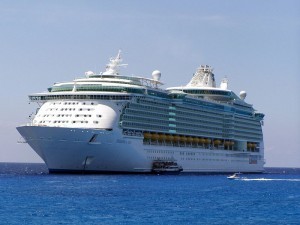 Cruise 1st has cruises unique to all parts of the world, departing year round. If you decide to go on a cruise at the last minute, it’s no problem as Cruise 1st has last minute deals at discounted prices so they can fill cabins. Don’t have a lot of money? Cruise 1st has cruises available to everyone on all budgets. From long, multi-port cruises to weekend getaways, Cruise 1st is your one-stop shopping website for cruises.
Cruise 1st has cruises unique to all parts of the world, departing year round. If you decide to go on a cruise at the last minute, it’s no problem as Cruise 1st has last minute deals at discounted prices so they can fill cabins. Don’t have a lot of money? Cruise 1st has cruises available to everyone on all budgets. From long, multi-port cruises to weekend getaways, Cruise 1st is your one-stop shopping website for cruises.
If you’ve already planned your cruise and you’re looking for activities at your destination, click here. Lonely Planet is the world’s leading travel book producer and has books on every part of the world. Worried about the weather and what the upcoming forecast is going to be? The Weather Channel has up to minute forecasts all around the world.
The post Love to Travel By Boat? Sailing Through History appeared first on We Said Go Travel.
Ghana: Once upon a moment
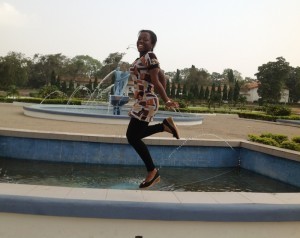 It was the Christmas holidays, the perfect excuse to have a good time away from work and the usually bustling everyday life. I didn’t think twice before agreeing to an invitation by my sister to spend it with her family in Ghana, a country over four hundred kilometers away from Lagos, Nigeria. I, alongside my elder brother and cousin, went by road rather than air, and merely passing through several other countries was exhilarating. Porto Novo was bursting with activity by French-speaking folks; we alighted for a while to buy their wares. Togo was serene, with policemen in funny-looking uniforms showing up from time to time. A large water body that was traced from Togo into Ghana was a sight to keep us busy.
It was the Christmas holidays, the perfect excuse to have a good time away from work and the usually bustling everyday life. I didn’t think twice before agreeing to an invitation by my sister to spend it with her family in Ghana, a country over four hundred kilometers away from Lagos, Nigeria. I, alongside my elder brother and cousin, went by road rather than air, and merely passing through several other countries was exhilarating. Porto Novo was bursting with activity by French-speaking folks; we alighted for a while to buy their wares. Togo was serene, with policemen in funny-looking uniforms showing up from time to time. A large water body that was traced from Togo into Ghana was a sight to keep us busy.
My sister’s family resides in Accra, the capital city. After a long, tiring but interesting journey, we finally arrived at their house at night and settled in. The following day, we went on a fun trip to the popular Labadi beach. The beach experience involved horse-back riding, water splashing, dancing, and munching of assorted meats and a lot of fun with friends and family. The following day had been planned: we visited the Accra mall and had a swell time feeding our eyes and filling our bellies, buying stuff and meeting people. From there, we proceeded to the prestigious University of Ghana, Legon, about twelve kilometers northeast of the center of Accra for sightseeing. From visiting the University of Ghana Business School(UBS), to checking out their halls of residence, to sitting with a couple of art students in their lecture theatre and chatting them up, we had not one single dull moment.
Soon we came to my best part: an exciting waterfall with carefully sculptured statues from whose mouths the waters surged. The view was pure bliss! As the blue waters poured beautifully, my emotions froze for a few seconds as I tried to breathe in the feeling those sights gave me. Meters away from this water fall was a gargantuan building known as the Great Tower. The scenery of the waters and the architectural edifice fused together inspired my poem titled ‘Sublime’. Below are excerpts of the poem:
Beauty lights have shone in my eye
Bliss!
Blue waters, blazing skies
Nature’s frigidity sublimed.
I love it when the air whispers
When the sun caresses the earth’s whiskers
When the fingers of mortal sculptors
Birth the greatest of visual pleasures!
This experience was the high point of the trip for me. Moving on, we stopped at a blue park with lovely seats where we sat to have drinks and take some more pictures.
The following day was Christmas, so the entire family went out to church. We afterwards visited the Marina mall and had meals at KFC, also branching to buy lovely Christmas presents for one another at Shoprite. We got home and spent some quality family time together. The rest of the trip involved us going to a popular market in Accra to see how things there are done and get some things for our folks back in Nigeria. I met an interesting man with a very rare gift of weaving customized hand bands for people. He enlightened me about the Asante people and their ingenious weaving skills, and gave me some discount as well, for which I was grateful. We also got the privilege of eating the renowned Banku, a Ghanaian meal we had heard so much about. A Nigerian proverb says that a man cannot live by the river and wash his hands with saliva, thus, we decided to take advantage of the opportunity, and I must say it was absolutely worth the try.
One notable observation I had during the entirety of my visit was the tranquil atmosphere of Accra. Unlike the usual hustle in Lagos, Accra had a calmness to it that easily admonished you to take life more easily. Ghanaian accents made me laugh and blush all at once; they were very pleasing to the ears. Infrastructure in the places I visited was commendable, and power was constantly consistent. I think my country has a few things to take down notes on about Ghana. I returned to Nigeria, excited about the nerve-relieving trip I had gone on. Moments like that don’t just leave your memory so easily. They are carved out on your heart’s tables, like beautiful sculptors slobbering blue water.
About the Author: Ife Olujuyigbe is an undergraduate of Obafemi Awolowo University, Ile-Ife, Osun State in Nigeria. She is twenty-two and sees herself as an adventure-loving writer. She owns a blog and you may also check her Facebook page.
The post Ghana: Once upon a moment appeared first on We Said Go Travel.
Goa Through the Eyes of a Portuguese Woman
Foreword:
A little history lesson before we commence. India has been the playground of the feisty European colonialists for centuries now. Most pockets were returned to the Republic of India in the 20th century. It is pertinent to note that the French have kept the soft power alive and strong in their former enclave of Pondicherry. In stark contrast, Portugal hasn’t quite managed to pull this off with Goa.
An Indian national of Goan origin, I have met numerous European travelers who spend months on end traveling through a continent of sorts called India. When I say Europeans, the French and Germans top the list followed by the rest: Spanish, Scandinavians, Italians, Polish, etc. The Portuguese backpackers have been conspicuous by their absence which led me to wonder why unlike their European counterparts, they were not attracted to karma, yoga, mantra, tantra and sari.
Also unlike Pondicherry, which is turning into a veritable hot bed for French nationals (both retired and fresh graduates) reeling from the economic crisis, Goa hasn’t managed to attract Portuguese citizens to benefit from the inexpensive Indian life. Meanwhile, you have enterprising French nationals setting up bilingual websites (English and French) designed to attract French expats to Pondicherry. And then I met, a young Portuguese traveler in Pondy who had actually visited Goa. She spoke about how Goa was represented in school texts while growing up in Lisbon, whilst also acknowledging that the Portuguese presence is almost nil in Goa. You can find more of her travel stories on her blog
————————————————————————————————————————————–
Who I am?
————————————————————————————————————————————–
With the name of Catarina Piedade, I was born in Lisbon, Portugal, where I lived all my life and worked 17 years as a civil engineer. Last year, after some short holidays in Asia and South America, I felt a growing a desire to spend more time traveling in order to have more contact with people of other cultures. So, six months ago, I decided to make a pause in my work and start my journey! Presently I’m in Nepal, after five months in India.
————————————————————————————————————————————-
Streets of Lisbon
What I heard about Goa while growing up through friends, family, school, history books
————————————————————————————————————————————–
Even today, in schools, the history books don’t tell much about Goa; it is mentioned like they mention the other colonies. Although Goa and Damão and Diu were under Portuguese domination for many centuries, they were small and very far from Portugal. We learn that they were an important source of spices and a port in the commercial route to the Orient.
What I learned about Goa, especially in journals and magazines is more related with the process of decolonization, which is closely connected with the fascist government that ruled Portugal during 50 years.
————————————————————————————————————————————-
Indians in Lisbon
————————————————————————————————————————————–
The Goans became Portuguese nationals because they were born under the Portuguese domination, but they were originally of Goan origin. Anyway when I grew up, I met some Goans in Lisbon who had grandparents and older relatives in Goa who they never saw, and never even considered the possibility to make such a long journey to visit them. Also by their face and the color of the skin is hard to imagine that they have Indian roots. The language connection was lost a long time ago; the only thing that remains is the food with all the spices and the famous samosas (we call it chamuças) that are a famous snack.
————————————————————————————————————————————-
My impressions of Goa as I grew older
When I grew up, Goa was famous for the rave parties and trance music, which completely changed the scenery, becoming, in my imagination, a place of hippies. Most of the people that I met who visited or even lived in India were from other Europeans countries, and weren’t really concerned about the culture or traditions.
Hippie in Goa
——————————————————————————————————————
Why Portuguese nationals do not visit Goa unlike other nationalities who visit
——————————————————————————————————————
It’s true, I did not meet many Portuguese who traveled to Goa: it’s expensive. Also India scares many Portuguese who prefer higher standard holiday in resorts and spas. Actually even during the last years of the Portuguese domination, Portuguese families did not emigrate to Goa frequently. In sharp contrast, many Portuguese people left Portugal to work in the other Portuguese colonies of Angola and Brasil.
Anyway, the few Portuguese that travel to India today always include Goa in the map… there’s a certain curiosity to see what left from the Portuguese presence.
————————————————————————————————————————————-
Goan Community Today in Lisbon
————————————————————————————————————————————–
Nowadays, I think we can’t talk about a Goan community. What still remains and which connects several people is Mozambique where many Goans of my generation were born. Their parents left Goa after the Indian Independence.
Most of the Goans I meet today in Lisbon are involved in commercial activity. Beyond restaurants serving Goan food, they have shops of clothes, food and furniture. The young ones are completely assimilated in the Portuguese society; Goa is just a far place where they one day would like to visit and where they know that they have some relatives.
————————————————————————————————————————————–
Difference Between Pondicherry and Goa
—————————————————————————————————————————————
Goa has welcomed international travelers since the 1960s, mostly British expats, Israelis and Russians.
Nowadays there is no close connection between Portugal and Goa. There is nothing to attract the Portuguese to Goa except the beaches. Even the inexpensive life is smashed by the expensive plain tickets.-
In Pondy we can really feel the French presence in the everyday life.
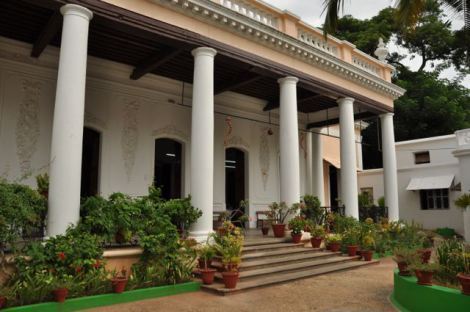
French House in Pondy
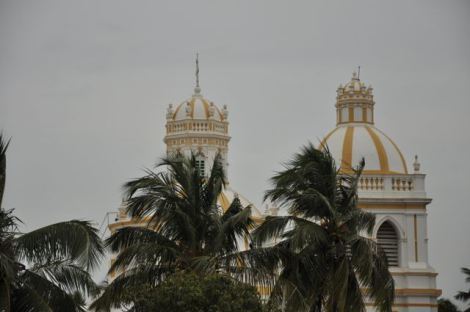
French Church
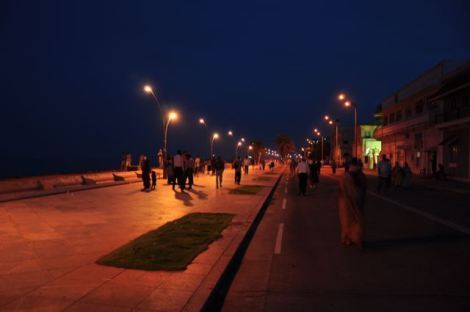
Le Promenade
In Goa, the Portuguese didn’t left any cultural or social institution, like school, libraries, cultural centers, anything that keeps the link; or if they did, they have such a discrete presence that I didn’t notice in the short time I spent there. I didn’t see any businesses like shops, restaurant or cafés with the Portuguese style, like we saw the French doing in Pondicherry.
The language is only spoken by a few old people, and there is no particular effort to teach or pass it to the new generations in Goa. Soon all will be lost.
What remains the religion… but it follows its own path.
————————————————————————————————————————————–
When I see churches in Goa and also Indian Catholics who were converted, what thoughts run in my mind?
————————————————————————————————————————————–
The religion is part of the culture, specially during the beginning of the 14th century, when the Catholic Church supported the movement that we call Descobertas which contained the new maritime routes and also new countries. This is however not a politically correct term to use because many of these territories were already inhabited and had a strong culture. The Portuguese just put them on the map, and didn’t “discover” them.
At that time it was normal that on arriving to a country, the Portuguese, (like all the other colonizers) would want to impose what they thought was the true religion to the “barbarian” culture they found. Even after all these centuries, the Catholic Church is part of the identity and the culture of Goa, and must be respected and seen with all the historic context of those times.
Also it is important to remember that almost all religions were spread by imposition of a king, an ethical domination, by politics or war. I think that the implementation of the Catholic religion in Goa is a natural result of the Portuguese presence, as was the language and the gastronomy.
We impose but we also assimilate… it´s the history of the countries.
Immaculate Conception Church in Panjim (Goa)
————————————————————————————————————————————–
I have traveled across India. Did I find that Goa has a different vibe compared to the rest of India?
————————————————————————————————————————————–
Of course, Goa has a different feeling… chill, calm… But all the states in India are different. Goa is more organized and apparently there is less poverty, and I don’t feel much the demographic pressure that is a characteristic of the most of the Indian states I visit.

Agonda Beach Dusk
Maybe it was a combination of the relaxed Goan lifestyle mixed with the climate and the wonderful beaches, that attracted the Westerners during the 60′s. But I don’t think that this feeling was a result of the Portuguese presence. Maybe the free consumption of alcohol is part of our legacy.
Anyway, my perception of Goa was not so deep as for example Pondicherry or other cities where I stayed for several weeks in this last visit to India.
—– Thanks Catarina for this recount.
The post Goa Through the Eyes of a Portuguese Woman appeared first on We Said Go Travel.
Raúl’s Havana
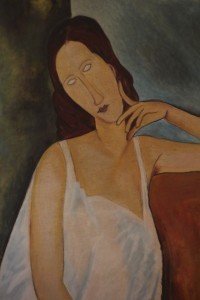 I landed in Havana fairly late on the evening of September 5th, 2013. In our last email exchange, Raúl – the friend of a friend of my boyfriend’s friend – had specified he’d be wearing a straw hat with over-sized sunglasses; I, had sent him a picture of my silly face. So upon exiting Jose Marti International Airport, it was easy to recognize each other between the crowds.
I landed in Havana fairly late on the evening of September 5th, 2013. In our last email exchange, Raúl – the friend of a friend of my boyfriend’s friend – had specified he’d be wearing a straw hat with over-sized sunglasses; I, had sent him a picture of my silly face. So upon exiting Jose Marti International Airport, it was easy to recognize each other between the crowds.
Shortly after, Raúl placed my two leather bags in the boot of a charming red Deux Chevaux. I sat in the back, Raúl sat in front – and as questions flew back and forth – our chófer drove, windows down, along deserted roads with thriving vegetation.
When we reached n° 637 on the Calle 1 of the Vedado, the car stopped – and despite my insistence – Raúl didn’t let me pay a cent. Instead, he quickly switched subjects:
“ I hope you don’t mind walking up the stairs: our elevator from the 1950’s just broke down.” He said with his Cuban accent.
“Of course not, I’m young!” I exclaimed. Except I hadn’t realized it was ten floors we actually had to deal with…
Sweating heavily through our light summer clothes, we wished a good night to the many neighbors we crossed as we climbed, and finally got to the top. Raúl unlocked a grid, pulled the gold handle of a white door, and his mother appeared lying before a ventilator on a flowered couch. She was watching Avenida Brasil – a Brazilian telenovela particularly famous in Cuba.
“Hola mi amor.” She turned around and, as she saw me, she stood up.
“Mami, Julie. Julie, China.” Raúl introduced us.
“China?” I repeated, uncertain, as we shook hands.
“Can’t you see she looks Chinese?” Raúl teased and, as she feigned to slap him, he ran off to drop my stuff in the first bedroom, on the left of the short corridor.
“Did you eat?” China asked.
“No, but I’m fine.” I said.
“Raúl, fix her something to eat.”
Following China, I entered the kitchen and immediately recognized the copy of Jeanne Hébuterne, originally by Modigliani in 1919.
“Who did this?” I asked.
“I did.” Raúl replied, reaching out for the fridge.
“That’s amazing…I still can’t believe that woman killed herself, the year after, while being pregnant.” I said absorbed by the painting.
“She was in love.” Raúl answered, sprinkling salt and lemon over a diced avocado.
“ She should’ve sold her husband’s paintings, at least she would’ve made herself rich!” China intervened.
“Mami. The woman committed suicide after her husband’s death. Do you really think she cared about becoming rich?” Raúl shook his head, and we both sat at the rectangular dining table.
“Being pregnant, she should’ve thought like a mother before throwing herself out of the window.” China insisted, pouring the water she had boiled, earlier on, in a huge plastic container.
“Well mami, I suppose she was madly in love.” Raúl repeated.
“And God punished her for this.” China placed the water container in the fridge and stepped out of the kitchen.
“When did you start painting?” I asked.
“I always wanted to paint, but I never had time until – shortly before my father died – I broke my back, and well…that’s when I began.”
“What happened to your dad?” I poked a piece of mango with my fork.
“He had a heart attack. Would you like some water?” I nodded and approached my glass.
“I was alone at home. I heard him call, but – with my frozen backbone – I couldn’t do much. Eventually, I managed to crawl. Yet it was too late.” He shrugged.
“Are you a lonely child?”
“No. My sister arrived the following day: after nine years in London she had planned a surprise visit. Good timing, huh?” He chuckled and passed a hand through his greasy black hair.
“And now? How does your mother cope with you living in the Dominican Republic?”
“It’s hard. Yet it’s the only way we can ‘survive’. As a widow with two pensions, my mother only earns 400$ per month. I’d earn between 8$ and 12$ per month here, so…” he took our plates and walked towards the sink. “Anyways, I’ll move back to Cuba some day: I don’t want to lose our house to the state.” He stretched, and standing by the entrance of his room, he said:
“Buenas noches, Julie.”
“Thanks for everything, Raúl.”
That night, I went to sleep feeling grateful for everything I had and –caught by the spur of the moment – I vowed to never complain again. Too bad it only took an expensive and limited Internet access at the Melia Hotel, the next morning, to discourage my spoiled westerner soul.
About the Author: With her multicultural French, American and Italian origins, Julie has always been a dedicated traveler. Since she discovered the sharing of her stories enabled her to travel some more, she also became a passionate writer – who now mainly strives to travel so she can write, and write so she can travel more.
Blog: http://beretta.matadoru.com/
The post Raúl’s Havana appeared first on We Said Go Travel.
November 24, 2013
A Weekend Break in Dorset
Dorset is one of England’s most charming counties, located on the South Coast of England, it is a perfect destination for a weekend or even weeklong break.

The Jurassic Coastline By JimChampion, via Wikimedia Commons
There’s no shortage of things to do, but a car would be recommended to get the best out of Dorset. Top of the list has to be the Jurassic Coast. It is Englands only natural UNESCO World Heritage Site and with good reason, it’s absolutely stunning. The pictures don’t do it justice, it’s a must see in person. You can drive along the coastline and stop at parts for walks / picture opportunities. If you are on a whirlwind tour, I’d recommend not missing out on Lulworth Cove and Durdle Doo which is just north of Lulworth.
You’ll probably want to start off in the largest town in Dorset, Bournemouth. This coastal town is famous for it’s beach, pier and vibrant nightlife. No wonder it attracts millions of tourists every year! Try and base yourself somewhere central to all the sights and sounds, most of the good hotels in Bournemouth are within walking distance of the centre and the beach.

Boscombe Pier By JimChampion, via Wikimedia Commons
If it’s activities you’re looking for, check out one of the many surf schools along the coast. You can rent out the gear and board for reasonable rates and head on down yourselves or you could book into a few lessons. Alternatively, but keeping with the beach theme, just spend a lazy day at the beach and the promenade. Bournemouth beach is one of the cleanest and most beautiful on the South Coast.
One of my personal favourite ways to explore a new place is to go on one of the numerous walking tours that have sprouted up all over cities around the world. The guides are often very knowledgeable and best of all, you can meet up with fellow travelers. Win win.

By JimChampion , via Wikimedia Commons
The best route to take around Dorset is probably to arrive into Bournemouth and drive along the coast westwards taking in Swanage, Weymouth, Charmouth and looping back up through the countryside. It’s easy driving, but beware in the height of the summer it can get busy on the roads!

The Cerne Abbas Giant, By PeteHarlow, via Wikimedia Commons
Most people love a good mystery and The Cerne Abbas Giant is a still a big mystery. It’s origins are still debated, but it’s impact on local culture is not. You’ll see souvenirs of this giant everywhere in Dorset, and a stop at the informative visitors centre is a worthwhile one.
For food, you need not look too far. There’s loads of options in the quaint villages and towns dotted around the Dorset countryside. From pub lunches, tea rooms to award winning restaurants, you won’t go hungry!
For lunch or an afternoon break, stop at a tearoom in any number of villages and try the famous Dorset apple cake with a bit of clotted cream on the side.

Old Post Office by Chris Downer, via Wikimedia Commons
Beer/Ale lovers can enjoy the brewery tours at both the Hall & Woodhouse and the Palmer’s Brewery. Stock up on the local ales which also make great accompaniment to a pub lunch! And speaking of pub lunches, give the Dorset Blue Vinney cheese a try. It’s a local blue cheese made from skimmed cows milk and goes great with a ploughmans lunch.
While the UK isn’t famous for the sunshine, believe it or not, there are vineyards in the South of England. Located in West Dorset is the Furleigh Estate vineyard where you can join a wine-tasting tour. A bottle of English wine makes for an interesting gift.
After Dorset, you’ll be in a great location to branch off and explore the neighbouring counties of Devon and Cornwall which are equally fantastic destinations.
Have you been to Dorset? Leave a comment below!
The post A Weekend Break in Dorset appeared first on We Said Go Travel.
Guatemala: Ancient Enchantment of Tikal
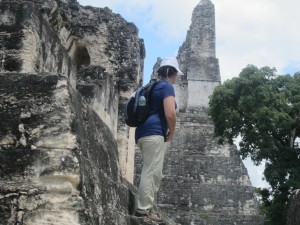 I was leery of the small plane waiting to whisk us to the ancient Mayan ruins of Tikal. I am not a fan of heights and tolerate air travel only because I love visiting far-flung places difficult to reach any other way.
I was leery of the small plane waiting to whisk us to the ancient Mayan ruins of Tikal. I am not a fan of heights and tolerate air travel only because I love visiting far-flung places difficult to reach any other way.
My sister and my niece grabbed their backpacks and dragged me forward. It was early morning, the sun shone and was already getting hot. We walked across the tarmac and boarded the plane.
The flight across the mountains and forests of Guatemala was beautiful, unhindered by the poor streets, highway bandits, and poverty we would have encountered along the road. Soon we were once again outside, squinting, getting accustomed to the light and searching for our tour guide.
Our guide Enrique enthralled us with tales of the ancient capital city, the Mayan people, and the land encompassing Tikal National Park. As we drove the van passed under a canopy of trees shielding us from the blinding sun. The park seemed devoid of activity, but it covers a huge expanse and the few people around were spread far and wide.
Walking through the thick jungle, our Mayan guide transported us back in time. We started to visualize the place as the center of a vibrant civilization, with a population at its peak, during the eighth century A.D., estimated as high as 120,000.
Some buildings are excavated, but most remain totally or mostly covered with a thousand years of jungle growth. Remnants of buildings poke out between trees, hinting at past greatness. Workers have carved wide walkways from the ruins of age-old roads.
Civilizations rise and fall for a variety of reasons. No one knows why Tikal declined, but speculation includes a combination of overpopulation, a series of agricultural failures, and wars lost. The city was abandoned before the twelfth century.
Local folklore remembered the grandeur of the past, and the overgrown, covered pyramids, temples, monuments and residences were rediscovered by the outside world in the nineteenth century.
Walking in the intense heat and climbing pyramids was exhausting. Only Enrique’s monologue and our whining about the heat broke the quietness.
We stopped in a clearing, taking shade under trees while our guide explained the buildings surrounding us, pyramids constructed in a design that gauged and emulated the seasons. A couple of low tables displayed small bouquets of fresh flowers and votive candles. Enrique explained this was a sacred place to Mayans. The people come to pray and leave tokens for their ancestors and deities.
Suddenly there was total, complete silence. A couple of birds cooed, a low sound breaching the stillness but not the peaceful atmosphere. Not a leaf stirred.
We looked around, observing the tall gray stone pyramids defining the clearing. We could almost see long-robed priests moving back and forth along the path between the structures.
The sound of a lute-like instrument unexpectedly broke the silence. Our guide had taken it from his pocket and began playing a slow, mournful tune.
After several minutes the music stopped.
“My grandfather taught me that song. He learned it from his father. It is a song of my people reaching back many, many generations.”
And then Enrique jolted us back to the twenty-first century.
He broke out singing an enthusiastic rendition of “Havah Nagilah,” a Hebrew folk song meaning, “let us rejoice”. A Mayan entertaining us with Israeli music in the midst of the Central American rainforest was mystifying.
Enrique had never left Guatemala. Where did he learn the Hebrew song?
“We get a lot of visitors from Israel. A group of young Israelis taught me the song. Now I love to sing it here.” The song resonated throughout the clearing.
Enrique finished, smiled and moved us along. We walked into what was once the main plaza.
Our imaginations took over. Weeds disappeared and the dislodged stones became roads, terraces and buildings, the disheveled wilderness transformed. A bustling metropolis emerged with people milling about, children playing ball and calling to their friends, vendors selling food and trinkets, and carts arriving from throughout the empire filled with merchandise, people, and news of their world.
A dead, long-buried city, crowded with ghosts of the past, messed with our minds. Their spirits spoke to us and we tipped our sun hats to them.
Our guide’s ancestors reached across centuries to their Mayan descendants, exhorting them to remember and be proud of their legacy.
We flew home a couple of days later, wondering about our civilization’s legacy and, centuries forward, who will remember. And what will they remember?
About the Author: I am a freelance writer and blogger enjoying a new flextime career after fifteen years in the financial field. I love the freedom of writing about anything that interests me, including and especially travel and food. Check out my blog Six Decades and Counting.
The post Guatemala: Ancient Enchantment of Tikal appeared first on We Said Go Travel.
Jewish Journal: Exploring Palawan, Philippines
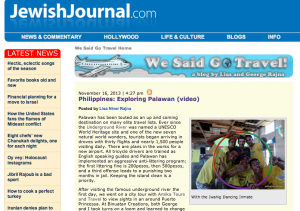 Palawan has been touted as an up and coming destination on many elite travel lists. Ever since the Underground River was named a UNESCO World Heritage site and one of the new seven natural world wonders, tourists began arriving in droves with thirty flights and nearly 1,500 people visiting daily. There are plans in the works for a new airport. All tricycle drivers are trained as English speaking guides and Palawan has implemented an aggressive anti-littering program; the first littering fine is 200pesos, then 500pesos, and a third offense leads to a punishing two months in jail. Keeping the island clean is a priority.
Palawan has been touted as an up and coming destination on many elite travel lists. Ever since the Underground River was named a UNESCO World Heritage site and one of the new seven natural world wonders, tourists began arriving in droves with thirty flights and nearly 1,500 people visiting daily. There are plans in the works for a new airport. All tricycle drivers are trained as English speaking guides and Palawan has implemented an aggressive anti-littering program; the first littering fine is 200pesos, then 500pesos, and a third offense leads to a punishing two months in jail. Keeping the island clean is a priority.
After visiting the famous underground river the first day, we went on a city tour with Amika Tours and Travel to view sights in an around Puerto Princessa. At Binuatan Creations, both George and I took turns on a loom and learned to change individual natural fibers into cloth at the weaving station. After drying fibers like acacia and grass, the fabric is dyed into every color of the rainbow. As with most of this city tour, each stop was also an opportunity for shopping. At Baker’s Hill, we learned about the famous Hopia bread made with ube or mongo, and saw several statue animals in this small “theme” park. We had a quick stop at Mitra Ranch to take in the great views and shoot photos.
The crocodile farm seemed more like a jail with large animals cooped up in small empty pens except for water. The largest crocodile, Senor Croc, is over sixty years old, weighs over six hundred kilos and measures seventeen feet long; he has been a resident for over twenty years. His abode is just past the hatching house. A violent crocodile, Valentino, was captured last year on Valentine’s Day in Southern Palawan and was locked up as he was a danger to society. I learned that saltwater crocs are even more dangerous.
WATCH: Hula Hooping with the Iwahig Dancing Inmates
After traveling through the city in the forest, we arrived at Iwahig Minimum Security Prison and penal farm. Many of the inmates work on the farm but a few prisoners work in the shop and are known as the Iwahig Dancing Inmates. The Philippines has a tradition of dancing convicts as in Cebu one Saturday a month, nearly one thousand inmates show off their style dancing in unison to Michael Jackson’s Thriller. I hula hooped while Juris from Cebu, Sandy and Allan from Manila, Dennis from Laoag, Pallet Jr from Laguna and Abraham from Aparri danced around me in a circle to Psy’s song “Gangnam Style.”
READ THE FULL ARTICLE on the Jewish Journal: Click here!
The post Jewish Journal: Exploring Palawan, Philippines appeared first on We Said Go Travel.
Rosy minutes in Varkala, India
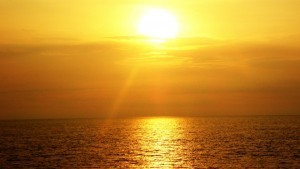 Like most countries, India’s north and south are worlds apart. While Delhi and Jaipur pedestal grand architecture and royal palaces, Kerala boasts that it is ‘God’s Own Country’. And it is as though God himself has picked this tiny part of the world for His own. The rice paddies, the tea plantations, the coconut groves, its backwaters, beaches, cliffs and the sunshine: Kerala really does have it all. And then, pinned to the chest of this southern state, there is Varkala.
Like most countries, India’s north and south are worlds apart. While Delhi and Jaipur pedestal grand architecture and royal palaces, Kerala boasts that it is ‘God’s Own Country’. And it is as though God himself has picked this tiny part of the world for His own. The rice paddies, the tea plantations, the coconut groves, its backwaters, beaches, cliffs and the sunshine: Kerala really does have it all. And then, pinned to the chest of this southern state, there is Varkala.
It is our fifth consecutive day by the beach. The sun is hiding in its milky cloud sky and there is a powerful wind tormenting the waves. Irritable, foamy-white ocean meets sullen, sugar-white sky at the horizon. Opposite, at shore, water cascades onto itself again and again, over and over. Sea rocks and sandbags glimmer wet in the tired sun of the afternoon and palm trees lean back-breakingly close to the edge of the sea, the gale forcing them to bend, bend, bend until their leaves are almost dipping in the blue.
The lack of scorching sun and sticky air is annoying; I have come to look forward to baking in the beach heat and competitively tanning. The ache of lying too long on hard-packed sand, back muscles flat against the unshifting beach, is a small price to pay for having a tan in October. The lines of swimming heat between sunbathers and sea, the crimson ripple of skin, the salt of wet bodies, the sting of burnt lips; everyone’s senses are set alight in Varkala. Seaweed smelling sarongs and damp board shorts merge with the almond scent of sun lotion. Warm water bottles waste in the sunlight, the air sucked out of them.
Later on, in the lemon infused hours of early evening, the tourists will emerge once more, reeking of apple soap, aloe vera and spiced shampoo. Those sense-filled, excited, delicious beach moments will belong to personal galleries of happy times, filed away and frequently sought out from the crevices of every memory. This afternoon, marooned on white plastic garden furniture at an ocean-side café, deafened by the raging Indian Sea and whipped by the untiring wind, belongs to such a gallery.
Two weeks later. Sitting cross-legged on Helipad Beach, metres from the toddler-tumbling sea, we watch the giant ball of burnt sun streak its way through turquoise sky. The clouds turn from cotton white to a colour so beautiful that even the lonely dogs lift their faces to the horizon. Shades of rose, tangerine, crimson, peach, apricot and coral leak into one another, staining the dusk. The space above, peacock blue, matches the rippling waves below, making it appear as though a paintbrush has just been dragged through the heavens.
There are no lines in this Varkala; no edges or boundaries or fences or roads. Just colours bumping into colours, sea giving way to sand, cliffs into beach and day into night. White hermit crabs scuttle silently in their thousands, moving tiny grains of sand while no-one is looking. And, just for those rosy minutes, honey-trapped in the moonset, India is still. The beach is the sky and the sun is the star; we toast God’s Own Country with a Kingfisher beer.
About the Author: Hannah Thompson-Yates: I traveled to Asia for the first time in 2010. Fresh from university in rainy Wales, I was a fair skinned, weak-swimmer with little tolerance for spicy food, cockroaches or long bus journeys. Six months later and I was hooked. Three years later and I still can’t bring myself to leave this wonderful part of the world. I love to travel, write, teach and indulge in serious amounts of sunshine and naan bread.
The post Rosy minutes in Varkala, India appeared first on We Said Go Travel.
We Said Go Travel
We Said Go Travel is a global community of over sixteen hundred writers with articles from every continent.
Stories are shared with photos and video from a perspective of the transformative power of travel. We Said Go Travel has hosted live and online events as well as travel writing contests around the world. ...more
- Lisa Niver's profile
- 57 followers


